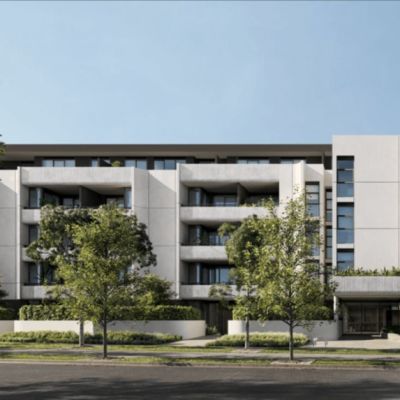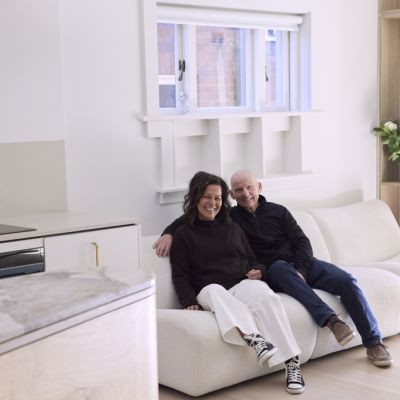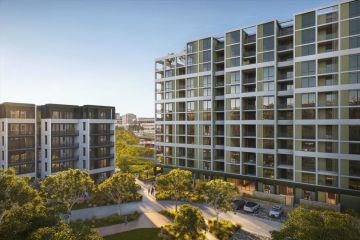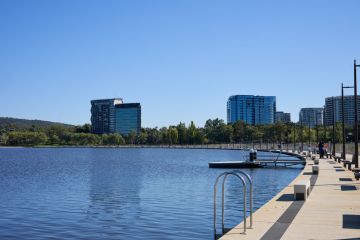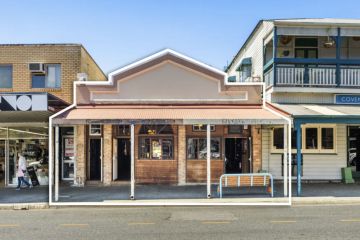The sought-after NSW coastal town on par with parts of Sydney
Byron’s unstoppable housing market has hit a fresh record, leaping to a typical rental price on par with some elite Sydney spots.
The median weekly asking rent for a house in the Byron local government area jumped 15 per cent over the 12 months to June to hit its highest ever median of $1150 a week, the latest Domain Rent Report, released on Thursday, showed.
The exclusive, in-demand coastal enclave is the only NSW regional LGA to command four figures for the median weekly house lease. The median weekly rent there was $1000 in the same period last year.
Sydney’s median house rent is $780 a week. A budget of $1150 would rent the typical house in Surry Hills, Haberfield, Wollstonecraft, Lilyfield, Botany, Lane Cove North or North Narrabeen.
Formerly the preserve of hippies and bohemians, Byron has reinvented itself as one of the most upmarket areas in the country.
However, the volume of its price growth is second to the coal-mining district of Narrabri, about 500 kilometres north-west of Sydney, which registered a 16.5 per cent spike for house rents over the 12 months to June.

The median there is now $530 per week, up from $455 the year before.
For houses, Oberon, in the Central Tablelands region, ranked third (up 13.9 per cent over the year, to $450 a week), followed by the border area of Federation on the Murray River (up 13.6 per cent over the year, to $500) and the Narrandera LGA on the Murrumbidgee River (up 12.7 per cent over the year, to $400).
Median weekly house rents in tourism locations including the Mid-Coast (Taree, Forster-Tuncurry), Clarence Valley (Grafton and Yamba) and Port Stephens (Nelson Bay, Shoal Bay), all rose 10 per cent each over the year to June.
Domain’s chief of economics and research Dr Nicola Powell says “lifestyle migration” and undersupply has supported Byron’s historically high rental price.
“This price point rubs shoulders with the northern beaches and eastern suburbs – those creme de la crème locations in Sydney,” she says.
Powell says Byron has a finite capacity to expand its housing stock.
“New completions are low and there is limited greenfield land, plus strict height and character rules,” she says. “It all feeds into what has been and continues to be a tight, competitive rental market.”
Byron Shire Council’s cap on non-hosted, short-term rentals of 60 days a year came into effect in September last year. The cap covers much of the shire.
Ray White chief economist Nerida Conisbee says desirability, along with more short-term accommodation options in the area than hotels, has put upwards pressure on prices.
“A lot of people want to live there, so that’s a big first challenge,” Conisbee says.
“The other challenge is that it is highly restrained in terms of the amount of housing that could be developed. If you look at the goal of the local council, they don’t want Byron to look like Surfers Paradise.
“That obviously is a worthy goal, but it does mean that there is very little ability to build enough homes. You can’t create enough density to get affordability.”
Some of the regional LGAs with the biggest growth in house rents in the year to June are the site of infrastructure projects. Jobs offered during the building phase creates a need for rental properties, and it doesn’t take many new residents in a small area to affect prices, Conisbee says.
Announcements include a $53 million plan to redevelop Gunnedah Hospital and a $180 million investment in the Lower Mid North Coast Health Service project.
Mining employment is another driver, Conisbee says, reflected in higher house rental prices in Narrabri, Singleton, Muswellbrook, Orange and Broken Hill.
Byron’s renters are entrepreneurs launching businesses, families relocating and travellers who temporarily stay for work.

Chris Hanley, chief executive of First National Byron Bay, says they are coming from afar, including South America and Britain.
“And if they’re not young by age, they’re young by mind,” he says. “Wellness, and a focus on good food and exercise, are in everyone’s headspace.
“People come to this area because they feel acceptance.”
Hanley says short-term letting has been part of the Byron market for more than 50 years. The 60-day restriction has anecdotally not boosted permanent rental stock, he says.
“It has been a steady climb for many of the last few years, simply because of demand and supply,” Hanley says.
“If you go back 10 years ago, we were at the high-end even then. Whilst we’re now a lot more than everybody else, they’ve also had increases but from a lower base.”
We recommend
We thought you might like
States
Capital Cities
Capital Cities - Rentals
Popular Areas
Allhomes
More
- © 2025, CoStar Group Inc.
